Border Bouquets and Brickbats
Want to know which are the best corridors and borders for travelling within Africa? Read on
Travel by road in the sub-Saharan region of Africa is not for the fainthearted. The journeys are fraught with difficulties caused by bad roads, long distances, limited communications and almost non-existent roadside services. The additional complications of excessive police roadblocks and checks, with the threat of arbitrary penalties and need for “sweeteners”, add time and cost to the journeys.
For commercial truck drivers in many areas, every trip is a major expedition on poor roads into a minefield of enforcement and delays caused by cumbersome systems, power outages and obnoxious officials. There is constant pressure to negotiate and pay for a range of unnecessary obstructions, delays and “services”, such as parking, border agents and officials.
Long periods of parking in unsafe, insecure, unserviced and, in many cases, very dangerous “parking” areas makes for a very unpleasant experience.
Fesarta has an unusually broad overview of the entire region and is in constant contact with the transporters on all corridors. In response to a member suggestion, Fesarta carried out a brief survey of the corridors and borders to identify the best and worst borders from the traveller perspective.
The comparative ratings were compiled from interviews with travellers, traders, truckers and drivers across the region. The questions focused on the courtesy, helpfulness and efficiency of the border personnel as measures of the service received by the public. The ratings were done for immigration and revenue authority at each border. The exercise revealed some very interesting contrasts for 14 separate border posts.
Table 1 shows the comparative rating for immigration officials at each of the 14 border posts. The “regions” are shown as East African Community (EAC) (eastern: yellow) and Southern African Development Community (SADC) (western: green), although it is recognised that the specific countries belong to one or more of the three Regional Economic Communities (RECs) in the region. As shown, the best borders are, with some exceptions, in the eastern region.
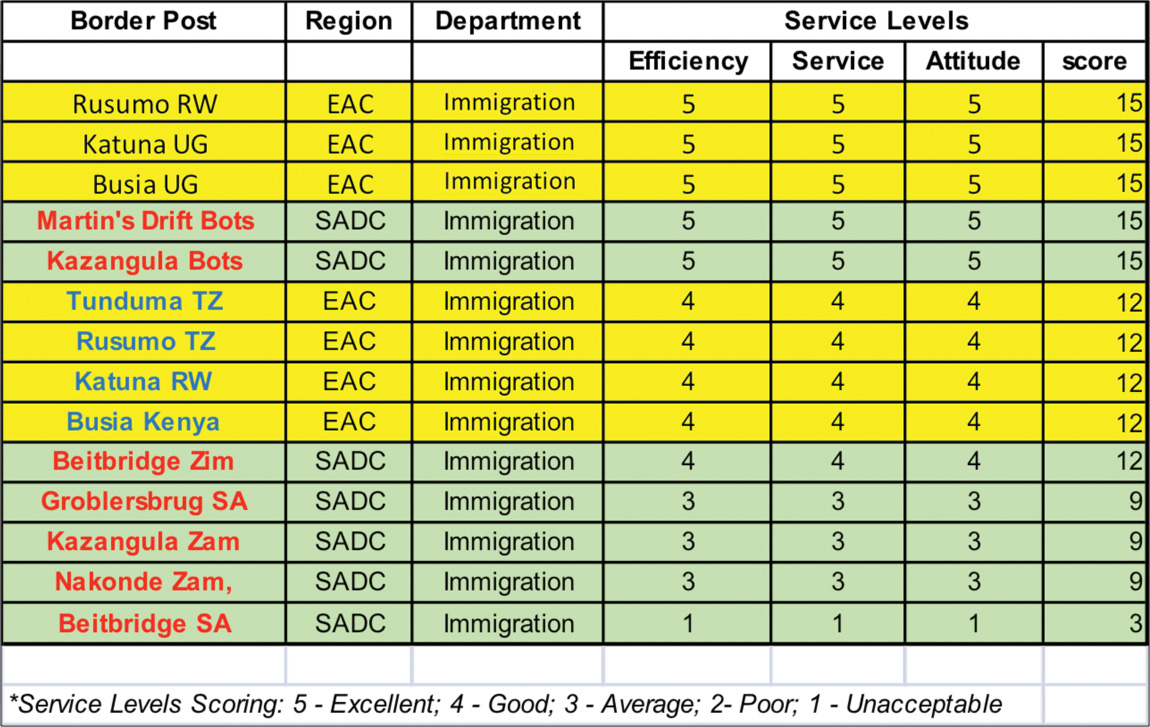
Table 2 shows the comparative ratings for the revenue authorities at the 14 borders and it can be seen that the ratings for the eastern region tend to be better, with the exception of Botswana.
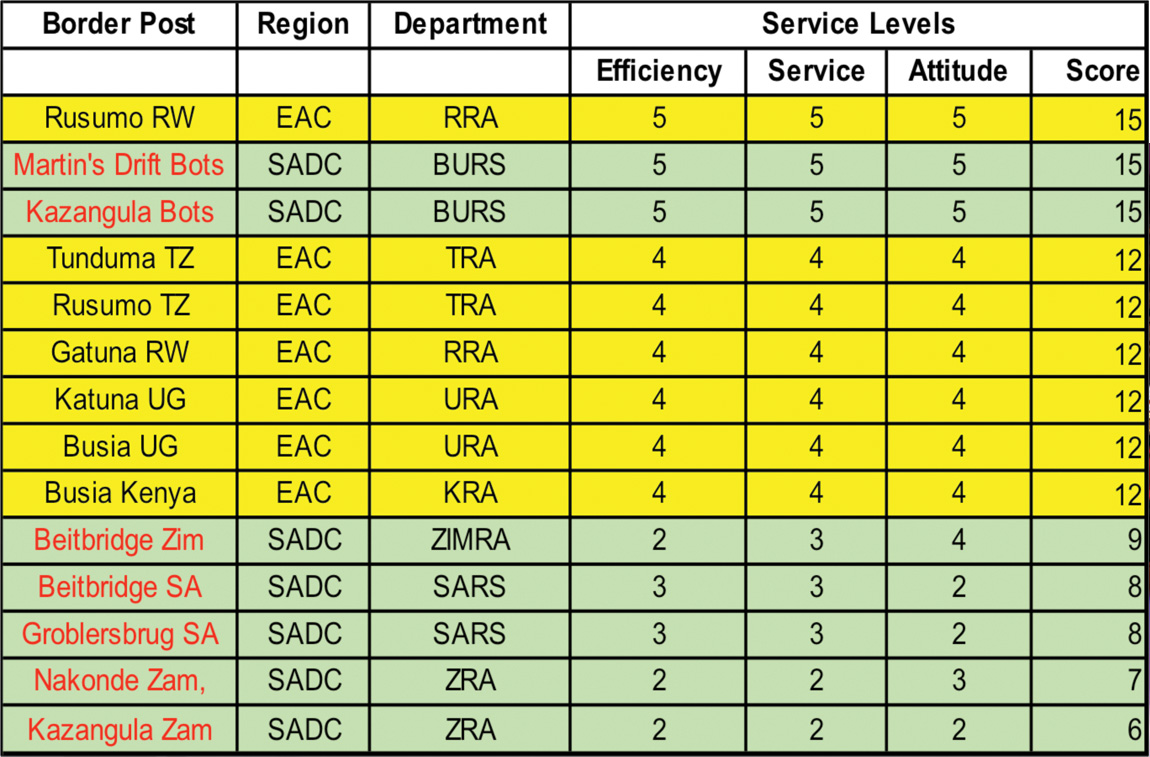
The relative scores for immigration and revenue authorities are shown in Figures 1 and 2.
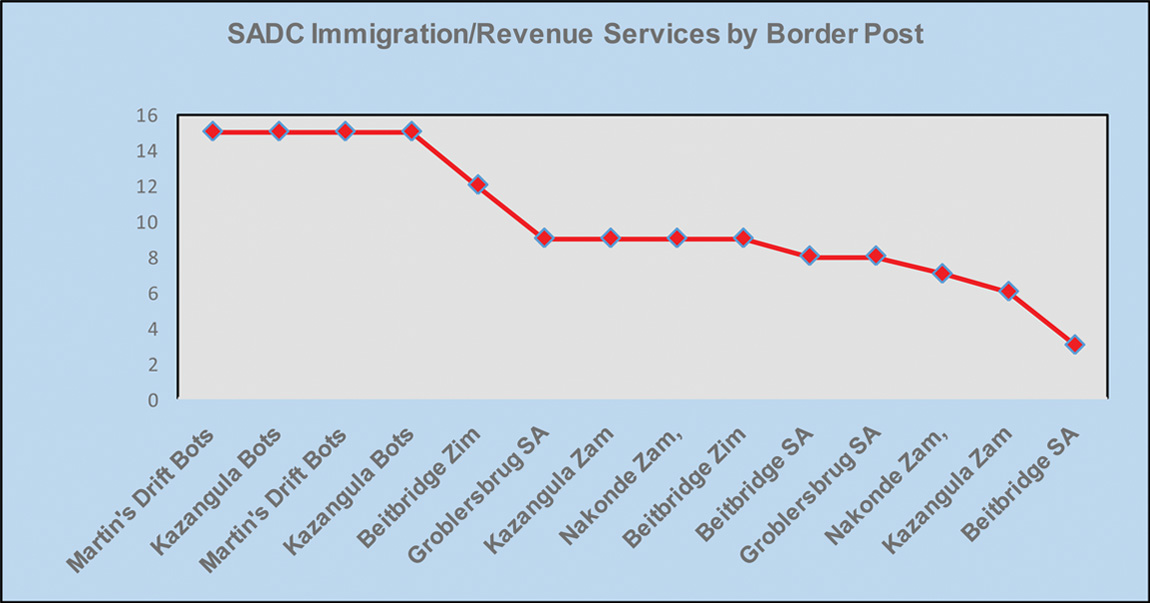
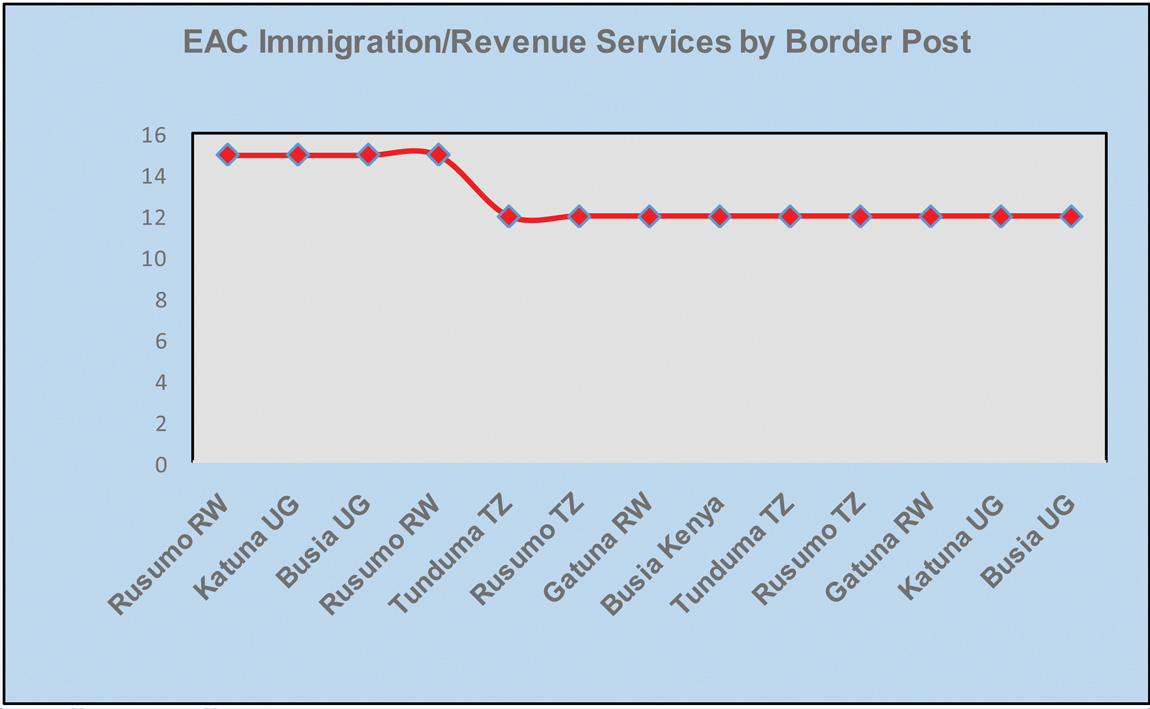
A further comparison between the eastern and western regions is shown in Tables 3 and 4.

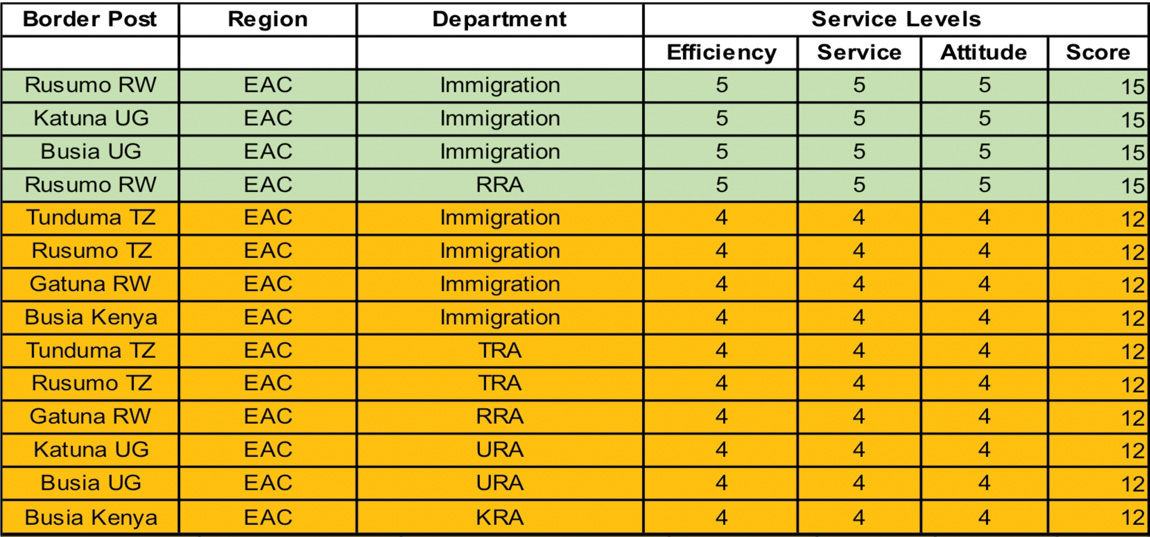
The comparison shows that the services of Botswana immigration and Botswana Unified Revenue Service (BURS) are best in the SADC region with immigration at Beitbridge: South Africa being the least pleasant border experience in the region.
By contrast, the eastern region showed very high scores almost across the board, giving credence to the often-reported revision of border arrangements, by establishment of one-stop border posts, single customs territories and integrated customs procedures.
From the results of this brief analysis it is clear that the very effective initiatives that have been implemented by the governments of the EAC region are efficient and fully supported by the trucking and travelling population, and are adding to efficiency and reducing the costs of regional travel.
This can be contrasted with the continual confrontation experiences on the corridors of the SADC region, where a lack of political adhesion and cooperation, and the will to resolve problems, is inhibiting development in the region through excessive travel and transport costs.
Current delays for trucks at Chirundu, Beitbridge, Kazangula, Kasumbalesa, Nakonde and Tunduma vary from four to ten days at a standing cost of US$ 30 (about R409) per hour. This inefficiency is estimated to be wasting more than US$ 80 million (R1,09 billion) per year.
Published by
Mike Fitzmaurice
focusmagsa




